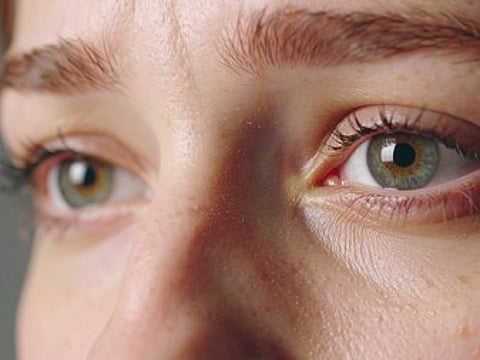Timely treatment saves diabetic Indian expat in Dubai from preventable blindness
World Diabetes Day reminder on hidden dangers of diabetic eye disease

A 50-year-old Indian expat in Dubai narrowly escaped permanent vision loss after sudden visual disturbances led to the discovery of an advanced form of diabetic eye disease – a condition doctors warn is increasingly common but often ignored until it becomes sight-threatening.
The Type 2 diabetic patient arrived at Medcare Royal Speciality Hospital with a three-day history of large black floaters obstructing vision in his left eye. He was anxious and distressed, doctors said, after noticing a rapid decline in his central vision.
Missed follow-ups
A year earlier, he had undergone retinal laser treatment but failed to return for mandatory follow-up checks – a lapse that proved costly. Coupled with poorly controlled blood sugar levels, the missed reviews allowed his condition to progress into proliferative diabetic retinopathy, the more advanced stage of diabetic eye disease.
Boat-shaped blood clots
“We noted that the patient had diminished visual acuity, central vision loss, and signs of aggressive proliferative diabetic retinopathy, including neovascularisation of the iris and pre-retinal haemorrhage,” said Dr Soman Nair, Ophthalmologist at Medcare Royal. Straining due to constipation – at a time when his blood glucose levels were very high – triggered the sudden bleed, worsening his symptoms.
A detailed retinal examination revealed boat-shaped blood clots in the left eye and previously lasered diabetic changes in both eyes. Fortunately, the right eye had not yet progressed to an active proliferative stage.
Urgent laser treatment
Given the imminent risk of visual loss, doctors initiated urgent intervention. The patient was advised strict metabolic control, a propped-up sleeping posture, and complete avoidance of straining. Additional retinal laser sessions were performed immediately to close off areas with poor blood supply and halt abnormal vessel growth.
The response was swift.
“After the treatment, there was a significant reduction in neovascularisation, resolution of the retinal bleed, and improvement in his visual symptoms. The floaters had disappeared from the patient’s eyes, allowing him to see clearly again after the procedure,” Dr Nair said.
Early detection is key
As the world marks World Diabetes Day today, Dr Nair said this case carries a simple, urgent message: managing diabetes involves keeping insulin levels under control to safeguard eyesight from diabetic retinopathy.
“Early detection and intervention not only preserve vision but also enable patients to maintain productive lives,” Dr Nair added.
Sign up for the Daily Briefing
Get the latest news and updates straight to your inbox


